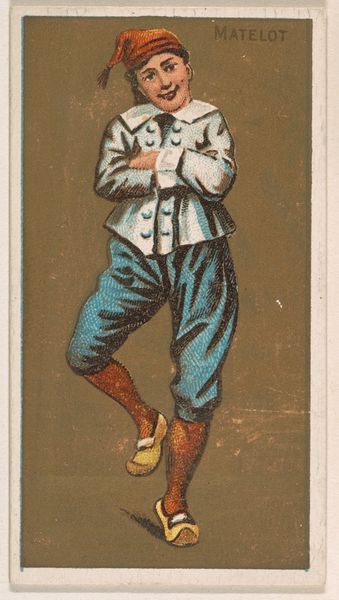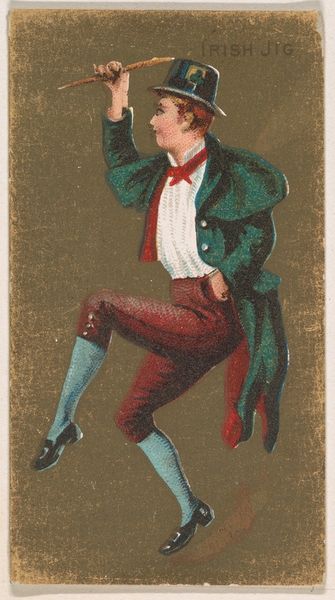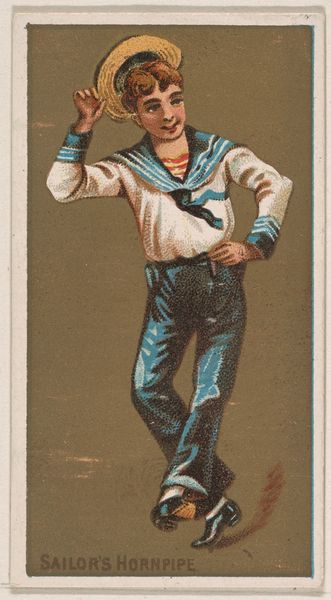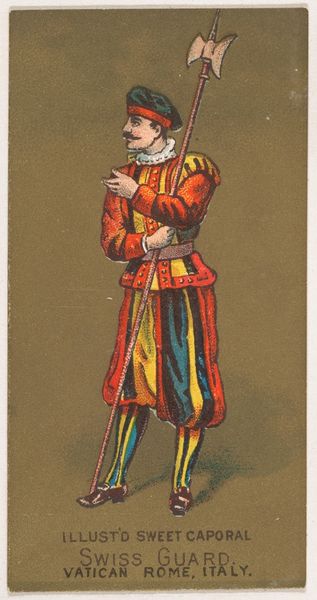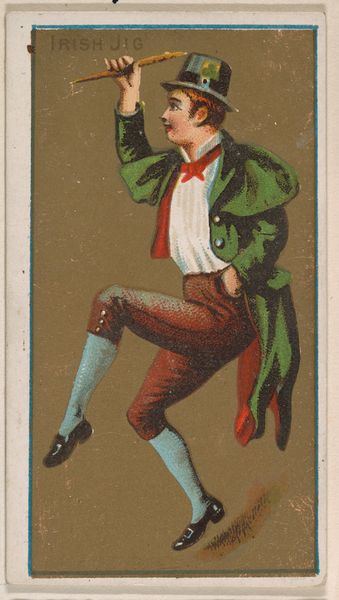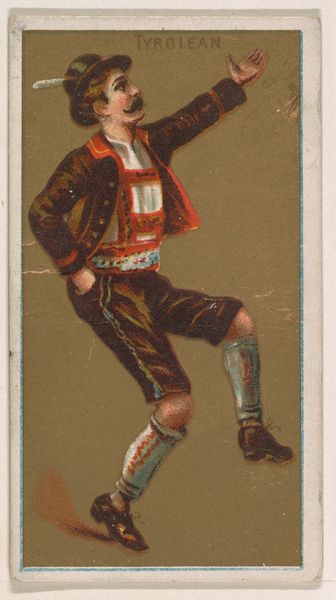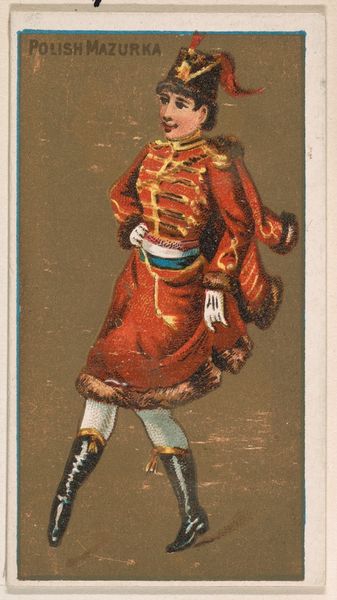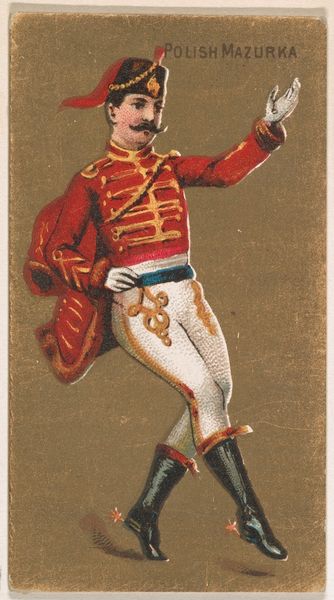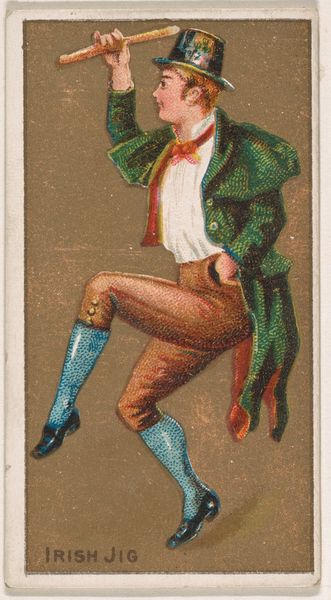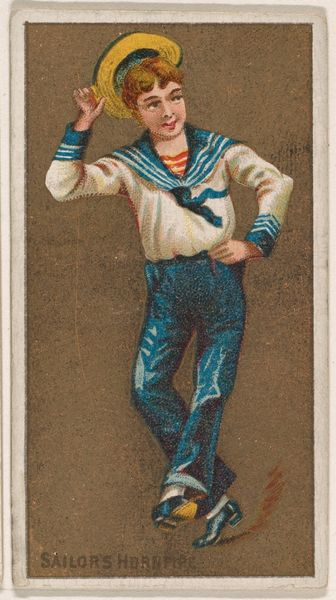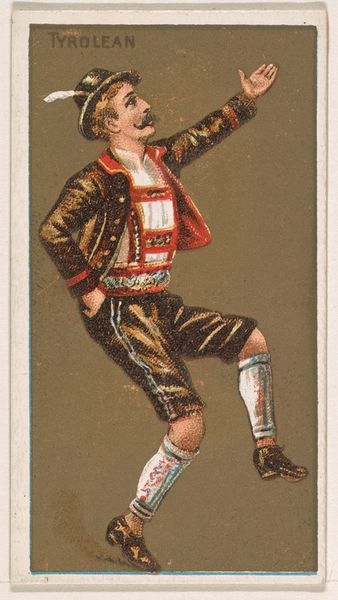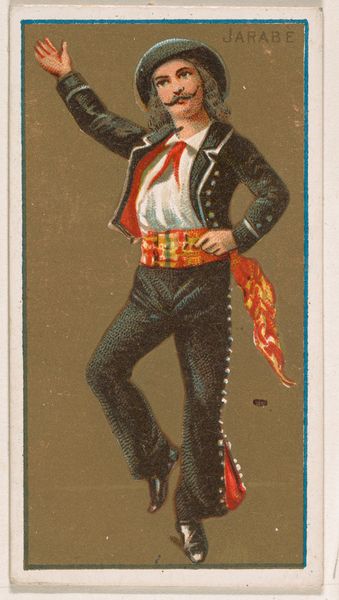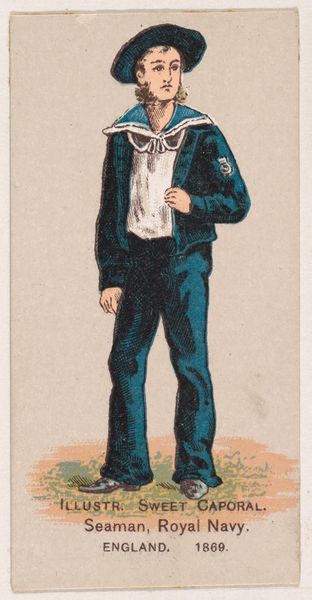
Matelot, from National Dances (N225, Type 2) issued by Kinney Bros. 1889
0:00
0:00
drawing, graphic-art, print
#
portrait
#
drawing
#
graphic-art
# print
#
caricature
#
caricature
#
figuration
#
watercolour illustration
#
academic-art
Dimensions: Sheet: 2 3/4 × 1 1/2 in. (7 × 3.8 cm)
Copyright: Public Domain
Editor: So, here we have "Matelot," a print made in 1889 by the Kinney Brothers Tobacco Company. It's from a series called "National Dances," and I can’t help but notice how theatrical the figure is – he’s got that almost performative pose and the bright costume. What’s your take on it? Curator: This piece is a really interesting artifact of its time. Kinney Brothers, a tobacco company, used these cards as marketing tools. Consider how the act of collecting and trading these images participated in constructing ideas about national identity and culture. What kind of image of France or Frenchness is this company selling? Editor: Hmm, I guess it’s a very stereotypical one. A dancing sailor boy? Kind of... Comical? And how did these cards circulate? Curator: Exactly. These cards, distributed with tobacco products, became incredibly popular. They fostered a sense of connection, even imagined connection, to different parts of the world for American consumers. They reflect and construct prevailing social attitudes. Notice how he’s performing for the viewer – is this an accurate representation, or an imagined spectacle? Editor: I never considered the promotional aspect and how it's related to popular culture. Now I'm wondering about the impact of that spectacle and those constructed representations of different national identities on a broad scale. Curator: Right. Think about how these images shaped public opinion. What was considered ‘national’ or ‘cultural’ at that moment? Whose voices were amplified, and whose were silenced? It highlights the power of visual culture to shape understanding and perhaps mis-understanding between people. Editor: That’s a whole new perspective for me. It's made me realize these images aren't just pictures; they're also a kind of historical document, reflecting societal biases and the marketing of those ideas to the public.
Comments
No comments
Be the first to comment and join the conversation on the ultimate creative platform.

